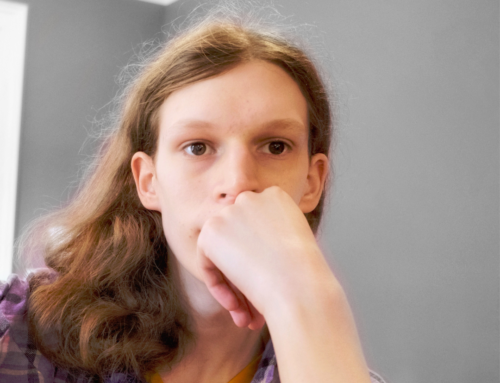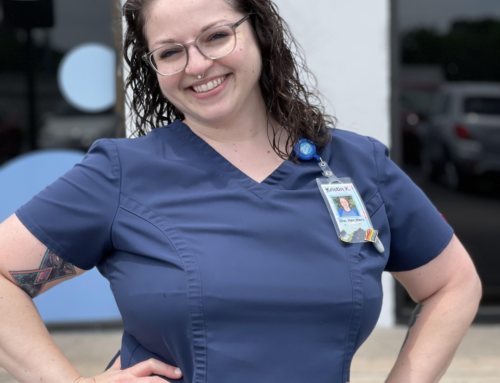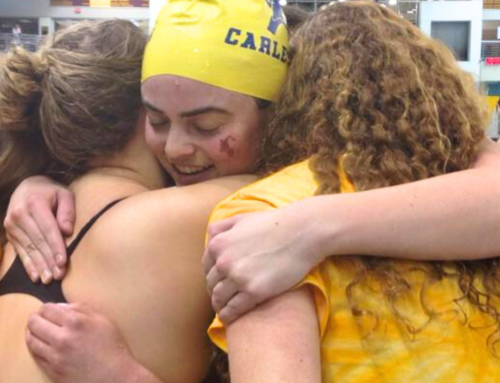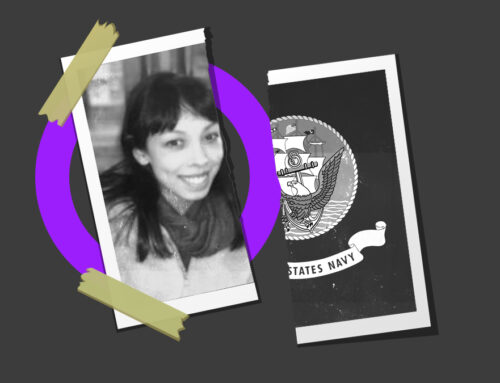Earlier this month (6/1/14) Arlene Baratz, AIC Board member, spoke at Sunnyhill Unitarian Universalist Church (Pittsburgh, PA) and gave an inspiring speech raising intersex awareness in honor of Pride month. Read to uncover Arlene’s personal journey with intersex as she describes what it was like to complete medical school and the surprise she had when her daughter turned six.
I’m honored to be here as we kick off Pride Week, celebrating the diversity of sexuality and gender in our community. This has been an exciting year for LGBT rights, with the Supreme Court declaring the DOMA unconstitutional last June, the US Census Bureau recognizing married LGBT couples as families, and our own governor allowing marriage equality to stand in PA. This was hard to imagine in 2008 when California passed Proposition 8 restricting marriage to “one-man-one-woman.” It looks like we will all finally have the legal right to marry and create families with whomever we love. And equal heath care is on the horizon too. After an investigation showing that LGBT people’s health is worse than it should be, our government’s National Institutes of Health (NIH) funded a huge new research project to find out why this is so and how to change it. On May 30, the Department of Health and Human Services ruled that Medicare must cover transgender surgery.
These changes support the rights of people whose sexuality or gender identity may be non-traditional, but whose bodies are just like everyone else’s. I was invited here today to discuss intersex, another kind of sex diversity sometimes cast under the LGBTI umbrella. If any of you are familiar with the “genderbread person,” it’s a drawing of a gingerbread cookie with a brain and a heart. In our brains is how we feel about ourselves along male/female spectrum and is often referred to as our gender identity; this may be reflected in how we act and dress, our gender expression. In our hearts is where our romantic and sexual attractions lie; commonly referred to as our sexuality. But we also have physical characteristics such as our genitals and reproductive structures that usually determine our sex when we are born. With intersex conditions, also known as differences or disorders of sex development (DSD), babies are born with physical variations that do not clearly fit expectations of a male-female binary in physical sex.
To help you understand these variations I will offer a foray into Intersex 101 biology because almost everything we learned in sex-ed is wrong! Most of us think we have a pretty solid idea of what it means to be male or female. We were taught that women’s bodies fit in a pink box and men’s in a blue one, each separate with no overlap. A female body has these physical characteristics: gonads that are ovaries that make estrogen, a uterus, genitalia with a clitoris, labia and vagina, and XX chromosomes. A male body has a penis and a scrotum containing testes that make androgen hormones like testosterone, and XY chromosomes. Most of the time, gender identity aligns with these physical traits.
So when a baby is born and we look on the outside we assume that a baby with clitoris and labia on the outside is a girl who will have a uterus, ovaries, and XX chromosomes and that she’ll have a female gender identity, grow up to be a woman, and most likely be attracted to men. If we see a penis and scrotum we assume that this is a boy with testes, XY chromosomes who will have a male identity, grow up to be man, and most likely be attracted to women.
But things aren’t always so neat. Variations of individual patterns of sex characteristics are much more common than people think. 1 in 2000 babies is born with some difference in sex anatomy and has unexpected chromosomes, gonads, or genitalia. DSD is more common that cystic fibrosis, which everyone has heard of. You probably know someone with one of these differences and aren’t even aware of it.
So let’s review some examples of the differences in intersex conditions.
A baby with XX chromosomes has a uterus and ovaries, but may be identified as a boy at birth because male genitals developed under the influence of high levels of male hormones from a serious hormonal condition called Congenital Adrenal Hyperplasia (CAH).
Another baby has XY chromosomes that prevent a uterus from developing. The baby has testes making androgens, but the tissues are immune to androgen effects, so the body turns the androgens into estrogen. This creates an alternative pathway to female development and this baby is a girl with Complete Androgen Insensitivity Syndrome (CAIS).
A third baby has one ovary, one testis, and a uterus. The baby has genital difference and doesn’t look either strictly male or female. The family and doctors will have to go through a decision-making process to determine whether to raise this baby as a boy or a girl. Part of this process will include predicting whether the baby is more likely to feel like a man or a woman in adulthood. Gender identity can be difficult to predict because it is influenced by many factors both biological and psychosocial.
So when a baby is born with uncertain sex, we can “assign” a sex based on how things look and try to predict how this child will feel, but in many cases it’s complicated and we’re not so good at it.
The rate of dissatisfaction with assigned gender in intersex/DSD is much higher than in the general population–up to 2/3 in some conditions. As we know from our transgender friends, it’s important for families, physicians and society to be open to gender variation
Some people who study sex and gender believe that hormones make the brain and our behavior more male or female, and they like to study intersex people to prove various theories. The biology of intersex people is fascinating, but in no way predicts who they will be. Their definition of self forms through the interaction of many factors including upbringing, medical treatment, and historical, social and cultural ideas. Like anyone else, it’s best to ask them, rather than tell them, how they define themselves.
I know this is a very open-minded group and that you’re following along thinking, “This is a lot of complicated biology, but OK, I can understand and accept people who are different in this way.” But science and culture has not been so tolerant to intersex people.
In the history of medicine and science, atypical bodies challenged ideas of traditional sex roles and raised fears about homosexuality. As medicine became more specialized, the birth of an intersex baby became a problem to be solved, prompting evaluation by doctors with expertise in hormones, surgery, and child development. Doctors projected their own discomfort with atypical bodies onto parents, and operations were developed to “normalize” genitalia to help parents bond with their children. Psychologists, who were interested in how gender identity develops, came up with the idea that babies’ gender identity and sexuality are “neutral” at birth. Since “nature” was neutral, nurture was the overriding factor. They believed that if children’s bodies were changed with surgery to be like “normal” boys or girls, and if they were raised accordingly, they would never know that there had been any difference at all. Starting in the 1950’s, surgeons would decide on the sex of babies with genital difference based on how easy it would be to make them look like a boy or girl. Factors other than appearance were not a consideration, so if a child’s penis was considered too small, even though there were XY chromosomes, normal testes and male hormones, that child would be made into a girl by removing the testes and penis, and given female hormones later. CAH is a condition that can cause male hormones and growth of a large clitoris that resemble a small penis in children with XX chromosomes and female internal reproductive organs. Although 1 in 10 of these children grows up to feel like a boy, the penis was removed in hopes of making them feel like girls. The even rarer cases of children born with both ovarian and testicular tissue were technically easier to make into girls. Parents were told that everything would be fine as long as they raised their children properly and never told them about their birth difference. If the “wrong” sex had already been announced, they were to change the baby’s name and move to a place where nobody knew them.
This is what I learned in 1980 as a first year medical student–that intersex was a little joke of nature which could be fixed with surgery and hormones; and that patients must NEVER be told because they would commit suicide if they found out. Ten years later, I was the mother of a 6-year-old girl and 4-year-old boy/girl twins when my older daughter had an operation for a hernia. It turned out that she had a hernia because a testis that had been in her abdomen was starting to move down into the groin. My husband and I were told that she had “testicular feminization.” Our wonderful doctor at Children’s Hospital said that the correct name of her condition was Androgen Insensitivity Syndrome (AIS), that she would grow up to be “normal” because her body was immune to male hormones, but she would not have a period or babies, and her testes would have to be removed some day to prevent cancer from occurring. Although this doctor was reassuring, I really wanted to talk to adult women with AIS or other parents about how to prepare my daughter for living with her condition. The fact that no one ever gave me another person with AIS’s contact information made me doubt that things would turn out so well. I thought to myself, “If everything was OK, wouldn’t people want to talk about it?”
My husband and I felt completely isolated, but decided that we should just raise all of our children to be aware of the rainbow of diversity that exists in all things. We talked about how people’s bodies are beautiful and different, and about how families come together because of love and not just biology. As they got older, our children learned that it is normal for some girls to have a uterus and a period and for others not to, and that what’s most important is all of the special things about us–like our sense of humor, love of music, and kindness to others. Things seemed to be going well but when my daughter became a teenager I couldn’t help but wonder how best to advise her about love and relationships; and I didn’t know how I could continue to keep her from finding out that she had XY chromosomes and testes. I was desperate to talk to anyone with a similar experience when a gynecologist we were seeing gave me the website for the AIS-DSD Support Group website of a support group for AIS in 2000.
Within hours of contacting the group I spoke to an adult woman with AIS who answered all of the questions I’d had for 10 years. She knew all about my daughter’s condition and encouraged us to share the details with our daughter. We went to a support group meeting and met wonderful people who shared their lives with us. I realized how lucky I was that my daughter’s outside physical difference was minimal when I heard the stories of people whose bodies had been changed with surgery and hormones. Their childhoods had been filled with multiple operations that left them feeling sexually abused. Far from normalizing them, the surgery left them scarred and in pain, without sexual sensation, and many of them had never experienced an emotionally intimate relationship. Many learned the truth of what happened from the surfing the internet and reading books in medical libraries. Realizing how they’d been lied to left them alienated from their parents and doctors. Some of those who had never identified with their gender assignment began living their truthful lives. Their problem wasn’t intersex or a wrong gender assignment; it was the irreversible treatments intended to relieve their parents’ and doctors’ discomfort with physical difference.
This was very different from what I learned was supposed to happen in medical school. Surely their physicians were unaware of these terrible outcomes or things would have changed. But it turned out that in 1996, when a group of these adults confronted physicians, they were dismissed. They were told that their unfortunate situations were the result of earlier, less advanced procedures. Doctors were confident that modern techniques would produce bodies that looked and worked as they should. Yet as the years went by, the hoped-for improvements never came, and the lives of many in that generation of intersex people were compromised by medical over-optimism.
In 2005, physicians from around the world came together and created a consensus to change medical terminology and treatment to make what they called disorders of sex development less stigmatizing and damaging. Doctors, nurses and mental health specialists were to work in teams to promote family and child wellbeing rather than a certain physical appearance or gender identity. Families and doctors were encouraged to gradually educate children about all the facts of their conditions. Children with normal testes and male hormones were to be raised as boys. A more cautious approach to irreversible surgery was promoted.
As the support group helped me raise all my children with pride and honesty, it gave me an opportunity to “pay it forward” by helping other families. I learned that families actually cherish the differences of children who aren’t exactly like everyone else, and want them to discover on their own what will help them be happy and healthy adults. Some families travel across the world to adopt children with these differences. Parents accept that their children’s gender identity may be uncertain and leave it to them to choose surgery or not. Since my last child finished high school in 2005, I’ve had the privilege of working with people like Bo Laurent, a founder of the intersex advocacy movement, to convince doctors that care should focus on quality of life, and that intersex children thrive with supportive parenting that allows them to make their own choices. My older daughter Katie is actively involved in the group and helped start a youth program focused on providing role models and building self-esteem. She chose to appear in “Growing Up Intersex,” a 2007 Oprah book club discussion of the book Middlesex, and is now a physician and advocate herself. Our family has also been in a BBC documentary “Me, My Sex and I,” promoting the message that love and support are the most important factors in whether or not a family will flourish. With the help of other advocates I’ve worked with, we’ve been successful in bringing intersex to the attention of the NIH, and intersex is now included in the new LGBTI health initiative. It’s happened slowly, but the example our support group’s families set, along with changes in social attitudes, have begun to convince doctors that love is the best medicine. Like any other parents, we love our children, and teach them that they are loved and lovable in all their uniqueness. For us, like other diverse people, 2014 Pride is a truly a time to celebrate our society’s affirmation of the richness that LGBTI people bring to our lives.





